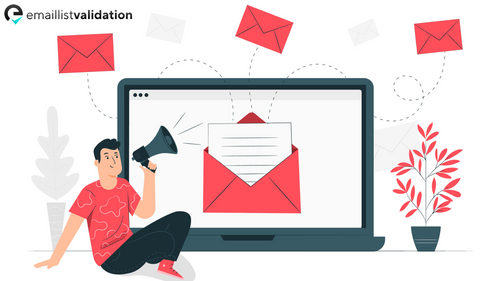In today's digital landscape, where online communication is a staple of daily life, trust and authenticity have become critical elements. Whether you're sending sensitive information, conducting business transactions, or simply connecting with friends and family, knowing that the source is genuine and trustworthy is paramount. This is where email verification logos come into play. In this comprehensive guide, we will explore the world of email verification logos, their significance, usage guidelines, and how they contribute to building trust and authenticity in online communication.
The Significance of Email Verification Logos
Before delving into the details, let's understand why email verification logos are significant in today's digital world.
Trustworthiness: Email verification logos serve as visual cues that an email is legitimate and has undergone a verification process. When recipients see these logos, they are more likely to trust the email's content and source.
Authentication: Logos verify that the sender is who they claim to be. This is especially crucial in preventing phishing and impersonation attempts, which can lead to data breaches and fraud.
Brand Recognition: Logos reinforce brand identity and recognition. When recipients see a familiar logo in their inbox, they are more likely to engage with the email and take desired actions.
Now, let's explore how email verification logos work and the benefits they offer.
How Email Verification Logos Work
Email verification logos work by authenticating the sender and verifying the email's legitimacy. Here's how the process typically unfolds:
Verification Process: The sender's email address is subjected to a verification process, which may include checks for authenticity, domain ownership, and sender reputation.
Issuance of Logo: Once the sender's authenticity is confirmed, a verification logo is issued to them. This logo serves as proof of verification.
Logo in Emails: The sender incorporates the verification logo into their email templates, typically in the header or footer. The logo may also be linked to additional information about the verification process.
Recipient's Perspective: When recipients receive an email with a verification logo, they can click on the logo to access more details about the sender's verification status. This provides transparency and reassurance.
Benefits of Using Email Verification Logos
Using email verification logos offers several advantages for both senders and recipients:
Enhanced Trust: Recipients are more likely to trust emails bearing verification logos, reducing the risk of phishing attacks and fraud.
Improved Open Rates: Emails with verification logos are more likely to be opened and read since recipients are confident in their legitimacy.
Reduced Spam Reports: Verification logos help distinguish legitimate emails from spam, reducing the likelihood of recipients marking genuine emails as spam.
Brand Recognition: Logos reinforce brand identity, making emails more recognizable and memorable.
Usage Guidelines for Email Verification Logos
While email verification logos are powerful tools for building trust and authenticity, it's essential to use them responsibly and according to established guidelines. Here are some key guidelines to follow:
Authorized Use: Only authorized senders who have undergone verification should use the logos.
Proper Placement: Logos should be placed prominently in the email, such as in the header or footer.
Link to Verification Details: Logos should link to a page with detailed information about the sender's verification process and status.
Consistent Branding: Ensure that the logo aligns with your brand's identity and is consistent with your other branding materials.
Transparent Communication: Clearly communicate the purpose and significance of the verification logo to recipients.
Frequently Asked Questions about Email Verification Logos
Q1: Are email verification logos the same as email signatures?
No, email verification logos are different from email signatures. Verification logos are issued by a third-party service to verify the authenticity of the sender, while email signatures typically contain the sender's contact information.
Q2: How can I obtain an email verification logo for my emails?
To obtain an email verification logo, you must go through a verification process with a trusted email verification service or provider. Once verified, they will issue a logo for your use.
Q3: Are email verification logos only for businesses, or can individuals use them too?
Both businesses and individuals can use email verification logos, especially if they want to enhance the trustworthiness of their emails.
Q4: Can email verification logos prevent all phishing attempts?
While email verification logos are effective in reducing phishing attempts, they cannot prevent all phishing attacks. Recipients should still exercise caution and verify the email's content and sender when in doubt.
Q5: Are email verification logos widely recognized by email service providers?
Many email service providers recognize and support email verification logos, making them visible to recipients. However, support may vary, so it's essential to choose widely recognized logos and providers.
In conclusion, email verification logos are powerful tools for building trust and authenticity in online communication. By following usage guidelines and incorporating them into your email communications, you can enhance trust, reduce the risk of phishing attacks, and improve your brand's recognition. Don't underestimate the impact of these logos—they are your allies in the fight against email fraud and impersonation.



